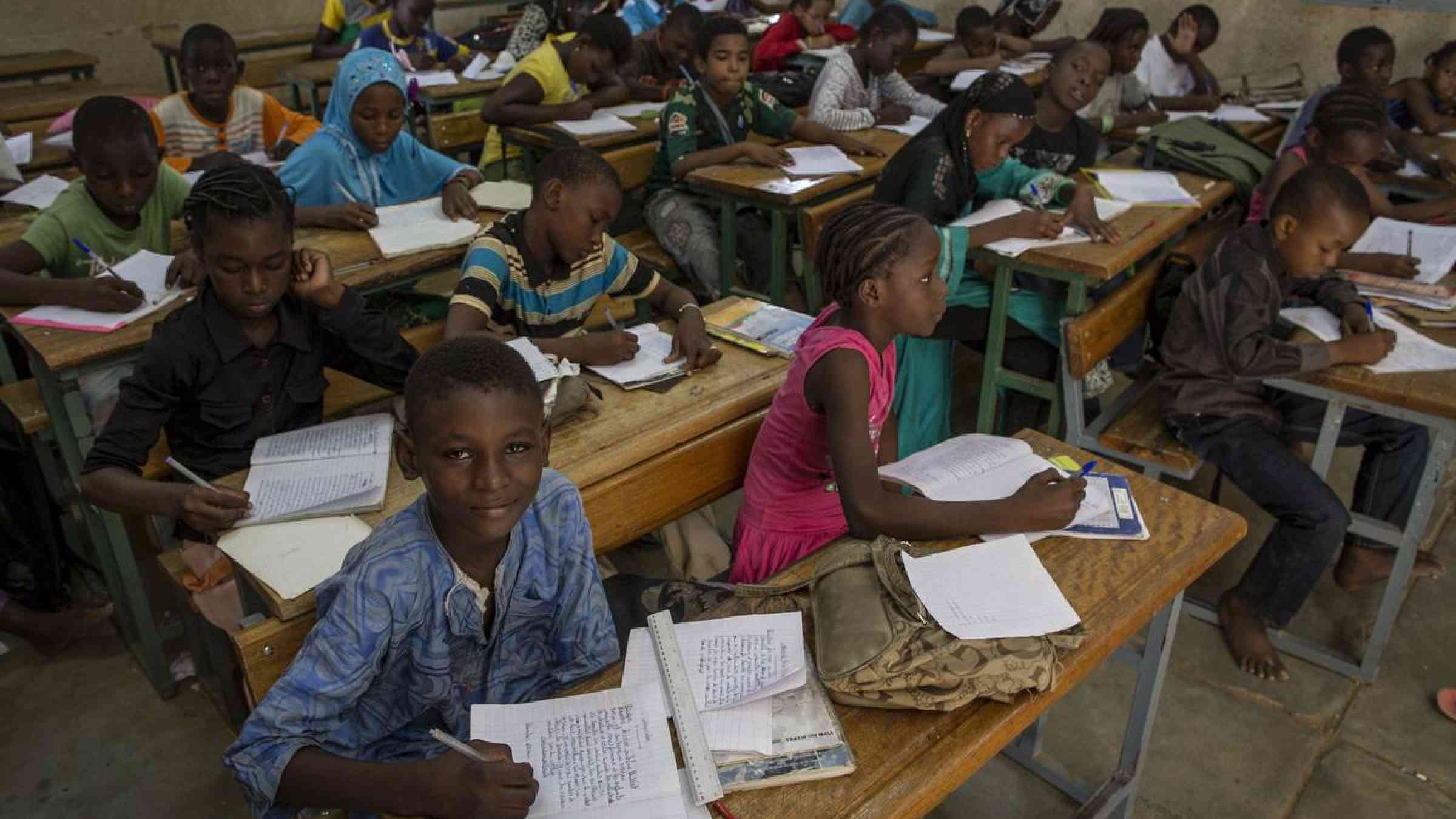Disasters in the classroom: Lessons on talking to students about extreme climate events

Schools are an important space for young people to develop their understanding of disaster risk, but too often teachers are missing educational opportunities. As the Sendai Framework for Disaster Risk Reduction stresses, disaster risk reduction should be integrated into all phases of school education.
Teaching about climate change must include disasters
Climate change and related environmental challenges are becoming a core part of school curricula in many countries. In the US, New Jersey has become the first state to mandate climate change education at all grade levels and in nearly all subjects. Other states, such as New York, are considering similar legislation. In Europe, the UK has announced a strategy for sustainability and climate change education. Italy has introduced climate change as a topic to be taught at all grade levels as part of civic education, but without specific guidelines.
However, climate change education usually focuses on teaching about gradual and global changes in weather and the environment. While understanding long-term climate trends is essential, students also need to grasp the immediate impacts of climate change manifested through extreme weather events such as hurricanes, bushfires, floods, and heatwaves.
Educators need to better understand how we can support learning about specific climate disaster examples in the classroom.
Children talk about disasters, and teachers should join the discussion
In our ongoing climate change education projects in Buffalo, New York and Northern Italy, we have identified opportunities to discuss climate disasters with students and improve their knowledge of disaster risk.
Both places have recently experienced major disasters (the 2022 Buffalo blizzard, and the 2023 Emilia-Romagna floods) that caused death and displacement.
In our conversations with teachers and students in these areas, we observed that:
- When students come to school after a disaster, they talk a lot about their experiences. They talk about how their neighbourhood was affected, the response or lack of response, and they make sense of the disaster from each other’s experiences.
- Students can link climate disasters to the knowledge they have about global climate change from school lessons. When they are asked about their climate change experiences, many students related the phenomenon to the recent disaster in their region.
- However, individual climate disasters are not often discussed in lessons. While teachers are generally aware of the social significance of climate disasters, they often avoid discussing recent disasters with their students, due to a lack of expertise and confidence, or the perceived sensitivity of the topic.
An opportunity to build awareness and foster preparedness
- When talking about a recent disaster in the region, it is important to invite students to share their first-hand experiences of the disaster. The teacher can ask what they know about it, what they experienced, and how they feel about it. Meaningful learning can occur when the topic is relevant to learners’ lives.
- Meteorological and social accounts of climate disasters need to be discussed together. Links can be made to various school subjects, from science to social studies and humanities. Teachers of different subjects can collaborate to facilitate students’ holistic learning about the disaster.
- Where appropriate, students can learn about the experiences of people who were directly affected by the disaster, such as those who have lost their loved ones or their homes. This can often be difficult, but if done with sensitivity and respect, it can help students develop care and empathy for disaster-affected communities. This is essential for promoting climate justice action to reduce risk and vulnerability of communities.
Teaching about climate disasters provides an opportunity to promote disaster preparedness and resilience among students.
By reflecting on response strategies to recent disasters, students can gain insights into effective mitigation and adaptation measures. Students can also develop empathy for those affected, realise that climate change affects us all, and take action to reduce disaster risk and spread awareness to protect their communities from future climate-related risks.
Schools are safe places for students to discuss and learn about climate disasters in an appropriate way with their teachers and peers.
Wonyong Park is a Lecturer in Science Education at the University of Southampton, UK. His research explores the role of STEM education in disaster risk reduction and disaster justice. He has conducted disaster education projects funded by the National Science Foundation (US), Research England, and the Economic and Social Research Council (UK).
Lorenzo Miani is a PhD student in Physics Education at the University of Bologna, Italy. His research focuses on the role of uncertainties in dealing with climate change, sustainability, interdisciplinarity and futures studies.
Olivia Levrini is Full Professor in Physics Education and History of Physics at the Department of Physics and Astronomy of the University of Bologna, Italy. She coordinated the European Erasmus + Projects I SEE and IDENTITIES, and the Horizon 2020 project FEDORA. Her current research interests include interdisciplinarity and future thinking in STEAM education.